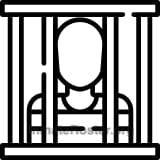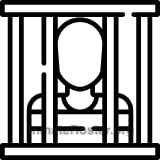Current Inmate Roster
222 inmates found | See allFrequently Asked Questions (FAQ)
Q. How do I find out if someone is currently detained at Archer County Jail?
-
Archer County Jail maintains an online inmate list where one can find the list of detainees. The list is updated usually fairly frequently. To check the inmate roster please visit Archer County Jail Sheriff Department website. If that doesn't work, another good way to find someone is to call the Archer City police department at 940-574-2571 and find out about the inmate directly.
Q. What if you are not able to find the inmate in Archer County Jail?
-
It means the inmate is transferred to nearby county jail or state prison facility or is released from jail. Check Texas inmate search page for more details on how to search for an inmate in Texas.
Q. What are the visitation rules of Archer County Jail?
-
Any individual with valid government ID and who isn’t on felony probation is allowed to visit an inmate. Children below 18 years, must be accompanied by a legal guardian.
-
For more information one can call 940-574-2571.
Archer County Jail Visitation Hours
| Sunday |
7:30 a.m. to 11:00 a.m. |
12:30 p.m. to 4:00 p.m. |
5:30 p.m. to 9:00 p.m. |
|---|---|---|---|
| Monday |
7:30 a.m. to 11:00 a.m. |
12:30 p.m. to 4:00 p.m. |
|
| Tuesday |
7:30 a.m. to 11:00 a.m. |
12:30 p.m. to 4:00 p.m. |
|
| Wednesday |
7:30 a.m. to 11:00 a.m. |
12:30 p.m. to 4:00 p.m. |
|
| Thursday |
7:30 a.m. to 11:00 a.m. |
12:30 p.m. to 4:00 p.m. |
|
| Friday |
7:30 a.m. to 11:00 a.m. |
12:30 p.m. to 4:00 p.m. |
5:30 p.m. to 9:00 p.m. |
| Saturday |
9:00 a.m. to 11:00 a.m. |
12:30 p.m. to 4:00 p.m. |
5:30 p.m. to 9:00 p.m. |
Map & Directions for Archer County Jail
More Information
The 1886 version of the Archer County, Texas, jail was a one-story wooden structure. Its dimensions (16 ft x 16 ft) yielded 256 square feet to house inmates and otherwise administer law enforcement in this north Texas county near the Oklahoma border. The site for this early jail was courtesy of a South Carolina dentist named C.B. Hutto, who founded the county seat of Archer City and donated the land for the jail and other landmarks in the town.
In 1909, Archer County approved $20,000 in bonds for a jail to replace the wood-framed building. A year-long construction project culminated in 1910 with the new county jail. In contrast to the wooden 1886 jail, the 1910 edition featured brown sandstone walls and steel I-beams for the three floors of the jail. Not all of the floors confined inmates. On the first floor, the sheriff and his family had the basics of any residence -- bedrooms, living room and a kitchen. Inmates predominantly occupied the second floor. The Archer County jail’s third floor featured its most unique feature. In addition to cells, that floor contained a steel “trap door” on the floor. The contraption, when released, would complete the hanging of prisoners. A noose would have from the ceiling of the third floor.
From pre-statehood Texas through August 31, 1923, counties administered the death penalty in their jails. The rope represented the primary instrumentality. A 1924 Texas law replaced hangings with electrocution and required that all executions to occur in the State Penitentiary in Huntsville, Texas. Such terminated the Archer County jail and others in Texas as permissible venues for the death penalty.
The first inmate of the 1910 Archer County jail faced charges of stealing a horse. Apparently due to the importance of horses to travel in the early and frontier days, Texas and certain other states, especially in the South, treated horse theft as a felony punishable by death. However, the defendant in this alleged horse-napping case, was not sentenced to death. In fact, no executions emanated from that third-floor gallows of the jail. In fact, by 1974, that three-story jail had ceased its role in law enforcement in Archer County. A year later, the American Legion Post No. 198 and the Archer County Historical Commission became the building’s new owners and converted it into a historical museum. Within it were displayed many Native American pieces of pottery and other artifacts to pay homage to tribes that once had a major presence in the region.
A 2009 report by the Texas Commission on Jail Standards noted that the post-1974 Archer County Jail failed at least three yearly inspections in the last five years. The underperformance of the jail, combined with pressures from the Commission, prompted planning for a new jail. The modern Archer County jail was completed by December 2010, making Archer County one of 10 Texas counties that completed new jail construction in 2010. Materials for the new Archer County facility include plexus glass and metal and replace bars as securing mechanisms.
Nearby Facilities
Didn't find the inmate you were looking for? Check these nearby jails and prisons





